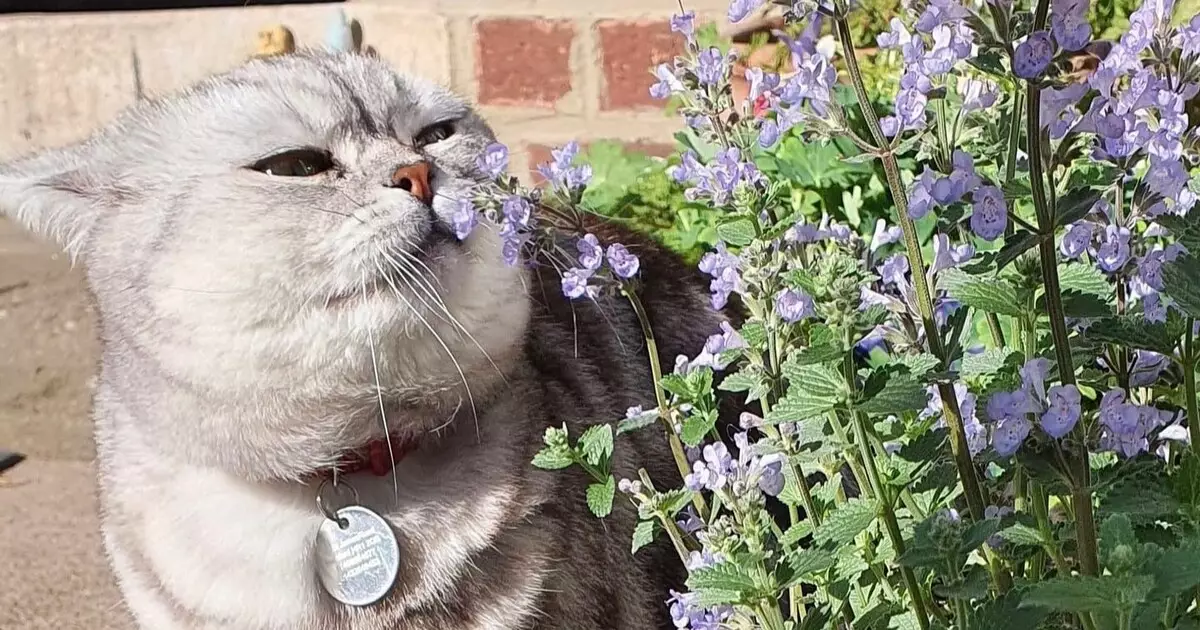Many cat owners have witnessed that unique behavior: their feline friends rolling around ecstatically in vibrant green leaves, drooling and purring with abandon. This captivating spectacle is, in fact, linked to the enticing herb known as catnip (Nepeta cataria). But why do certain cats have such strong reactions to this particular plant? The answer can be found in a combination of biology and ecology that reveals much about the enchanting world of our furry companions.
Catnip’s intoxicating effects are largely due to the presence of a class of compounds known as iridoids, particularly nepetalactol and nepetalactone. These figure-eight-shaped molecules are released when the plant’s leaves are disturbed. Interestingly, this not only creates a euphoric experience for the cat but also serves another purpose: catnip acts as a natural insect repellent. As the leaves are torn and crushed, they emit these compounds into the environment, offering a protective shield for the cats against pesky mosquitoes and other pests.
Studies have indicated that the act of tearing apart these leaves triggers a significant increase in iridoid release. This dual functionality – providing pleasure to the cats while warding off insects – suggests that this behavior is deeply rooted in evolutionary biology. The instinct to engage with plants like catnip could have provided ancient felines with both a delightful distraction and a strategic advantage in avoiding insect bites.
Interestingly, catnip isn’t the only plant that elicits such jovial reactions from felines. Alternatives like valerian and silver vine can also provoke similar responses, illustrating a broader suite of botanical options for indulgent feline play. Just as humans might indulge in the benefits of herbal teas, cats can experience a heightened sense of joy and well-being through these natural compounds.
It’s worth noting that many other species in the animal kingdom utilize aromatic plants for their own protective benefits. From birds that roll in citrus leaves to lemurs that rub millipedes over their fur, the intelligent use of natural resources is a widespread phenomenon in nature. However, cats enjoy a unique advantage due to the simultaneous activation of their opioid reward systems during their joyride through catnip.
Beyond its effects on cats, the plant itself is incredibly resilient and adaptable. Catnip thrives in a variety of conditions, from full sunlight to partial shade, showcasing its robust nature. Often overlooked for its aesthetic qualities, this hardy herb produces delicate flowers adorned with subtle hues that beckon pollinators like bees and butterflies.
Moreover, catnip doesn’t just cater to cats; it’s completely safe for other pets, including dogs and rabbits. This broad appeal highlights the ecological significance of Nepeta cataria, as its presence supports an array of wildlife, contributing to the balance of local ecosystems.
In understanding catnip, we uncover a delightful intersection of biology, ecology, and animal behavior. Not only does it provide a mesmerizing source of joy for our feline companions, but it also showcases the intricate relationships between plants and wildlife. As we continue to learn more about the benefits and workings of this incredible herb, it becomes evident that catnip offers far more than a mere playful distraction for our kitties; it is intricately linked to their health, evolutionary strategies, and the vibrant tapestry of the natural world.

